Automotive
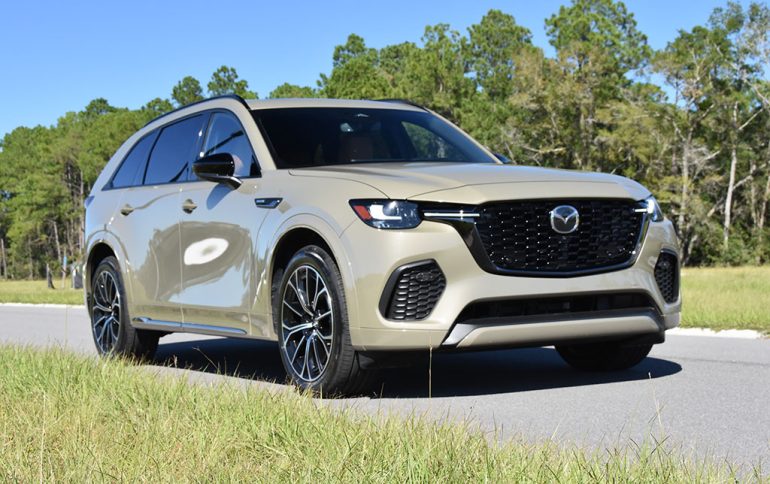
Mazda has made some major inroads by gaining a newfound footing for offering near-luxury vehicles that happen to be in highly competitive mainstream segments. That near-luxury has been delicately mixed with the sporty nature of Mazda vehicles with a clear sight to upset many with new larger SUVs like the new CX-90 and its nearly identical sibling, the CX-70.
After having a week with the new two-row seater Mazda CX-70, it’s quite interesting to see that it embodies identical fundamentals of the three-row seat CX-90, with the standout difference being just the seating configuration. Yes, that’s right, the main difference between the two resides with the CX-70 being a 5-passenger crossover while the CX-90 proudly touts its 6, 7, or 8-passenger three-row seating setup. Otherwise, the only differentiation between the two are subtle exterior trim pieces, the wheel style, and, of course, the obvious extra cargo space that the CX-70 gets as there’s no third row of seats. Such an interesting singular difference may confuse many as to why there’s a different model name over the CX-90 – making the point that Mazda could have just offered the CX-90 with the option to remove the third-row seats. Sure, you’re not alone in thinking such, but here we are with the CX-70, essentially the two-row seat version of the CX-90.
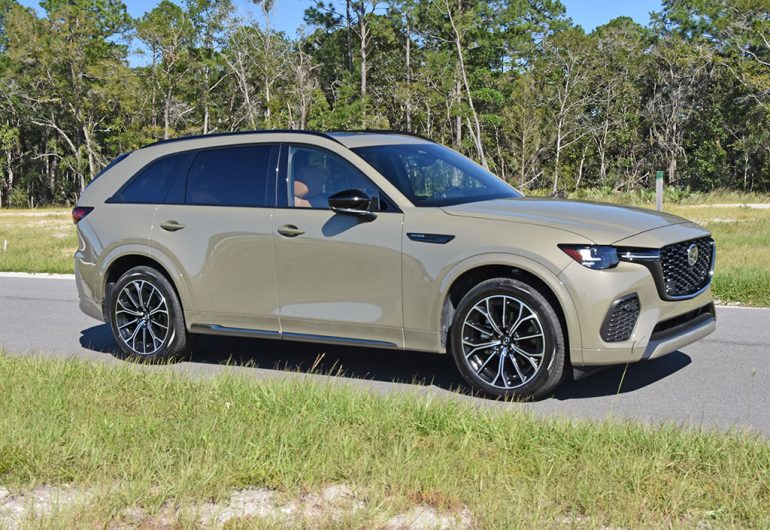
Driving the new Mazda CX-70, there’s no difference in what I experienced in the enjoyable CX-90 as they have a decent mild hybrid powertrain using a 3.3-liter turbocharged inline 6-cylinder engine that outputs 340 horsepower and 369 lb-ft of torque. The engine is mated to a direct-feeling 8-speed automatic transmission, and just as in the CX-90, the powertrain feels strong and often utilizes its mild hybrid system to shut off the engine upon coasting and coming to a stop to preserve fuel. You’ll easily match the EPA estimates of 23 mpg city, 28 mpg highway, and 25 mpg combined in the real world as I did driving the CX-70.
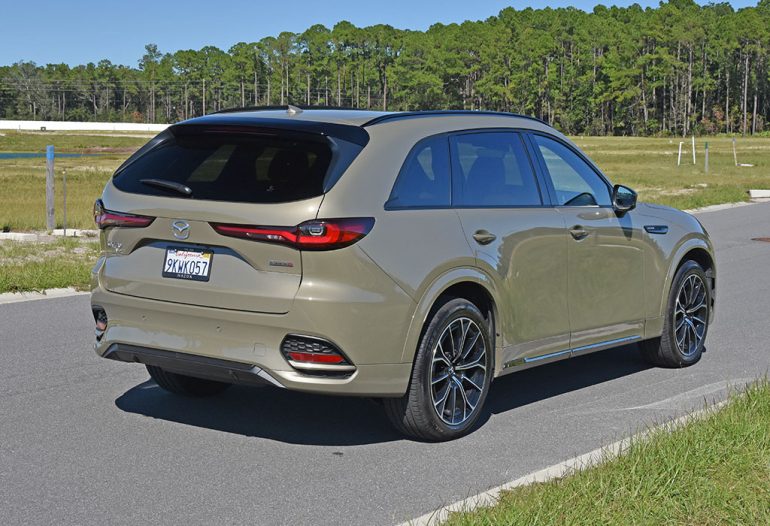
The driving character of the CX-70, while identical to the CX-90, doesn’t play too hard in the sporty category as it exudes a compliant ride quality. Otherwise, there’s the typical familiarity of the CX-90, even if the CX-70 may weigh a tad less with it not having the third row of seat to tote around.
See Also: 2024 Mazda CX-90 Review & Test Drive
In all, the CX-70 is the sportiest crossover you’ll find in its segment, and that sportiness goes the distance for a respected level of performance, getting the SUV up to 60 mph in 6.3 seconds.

Inside the cabin is, of course, the identical layout to that of the CX-90 until you view behind the back seats where there’s a large cargo area, as much as 39.6 cubic feet of space with the rear seats up in place. There’s also a little bonus area of under-floor storage just behind the rear seats, where the CX-90’s third row would have resided and folded down.
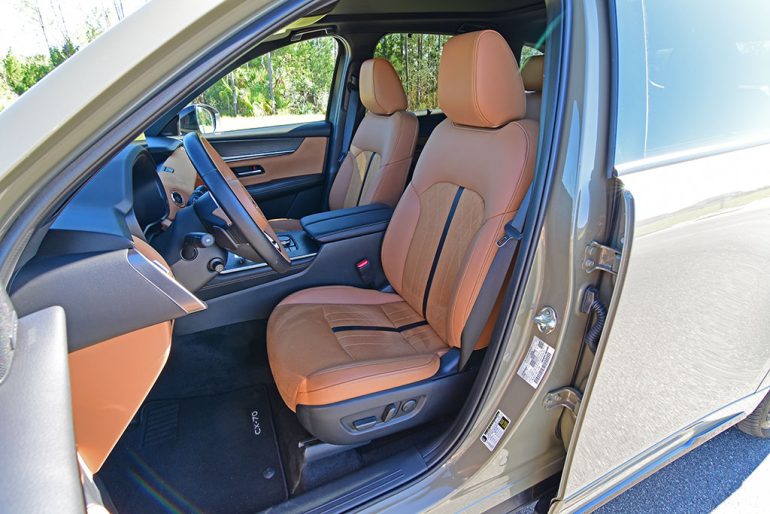
There’s a lot of enjoyment to be had in the new CX-70, even if it is a bit confusing. You get all the identical luxury-themed equipment as you do in the CX-90 of the matching trim level, such as heated and ventilated front and rear outboard seats, eye captivating accenting colors with swaths of suede interior trim throughout, nappa leather seating surfaces, and a heated-power telescoping steering wheel.
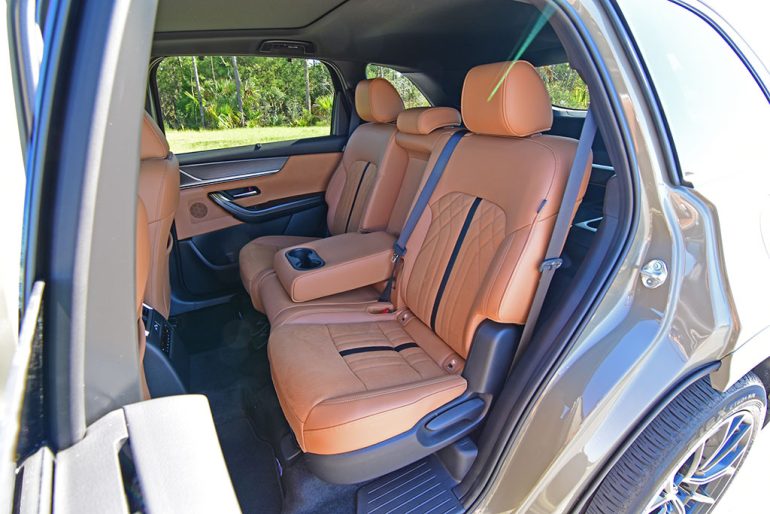
Mazda’s latest infotainment system returns but now allows touchscreen functionality for wireless (or USB-connected) Apple CarPlay and Android Auto integration. Otherwise, the system must be used with the physical controller knob and buttons located behind the odd transmission gear shifter. I say the shifter is odd because of its leftward motion that you must use to place the vehicle in park, or you could confuse reverse as the natural motion for park and end up hoping that the emergency rear braking system acts to save you from a slow-motion backup collision.
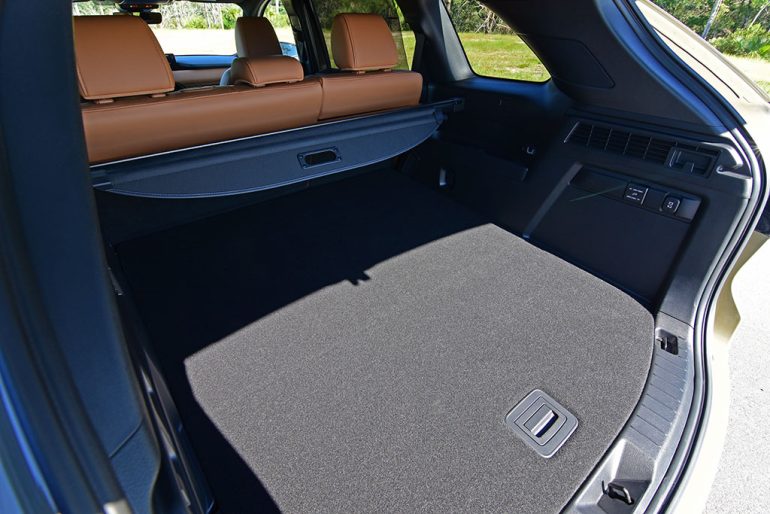
In all, the approach that Mazda has taken with the new CX-70 may seem a bit lazy to some, but in retrospect, it’s a good move, considering some people will never use or have the need for a third row of seats but enjoy all that else that the highly praised CX-90 offers. With that, the CX-70 comes in at a similar pricing structure, but oddly enough, the CX-70 starts at $40,445, which is about $2,600 more than the CX-90 but then settles about $500 less than the CX-90 if you opt for the top 3.3 Turbo S Premium Plus trim that I am testing here, which comes to the as-tested price of $57,775.
FOLLOW US TODAY:
